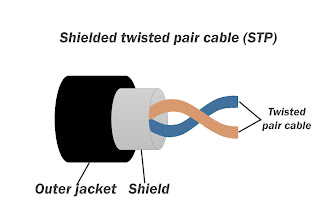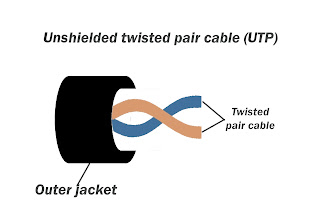Twisted pair cable is one of the most common forms of wiring in networks, Especially in LANs and it consists of two insulated wires arranged in a regular spiral pattern (Double helix). It is generally used for telephone communications in offices and also in modern Ethernet networks. For telephonic communication a Voice Grade Medium (VGM) cable is used but for LAN applications a higher quality cable known as Data Grade Medium (DGM) is used.
Types of Twisted Pair Cable
There are two types of twisted pair cable:
- Shielded Twisted pair cable (STP)
- Unshielded Twisted pair cable (UTP)
 |
Shielded Twisted Pair (STP) Cable
|
 |
| Unshielded Twisted Pair (UTP) Cable |
Advantages of Twisted Pair Cable
- It is simple.
- It is physically flexible.
- It is easy to install and maintain.
- It can be easily Connected and has a low weight.
- It is very inexpensive.
Disadvantages of Twisted Pair Cable
- It can be easily pick up noise signals.
- Being thin in size, it is likely to break easily.
- It is unsuitable for broadband applications.













0 Comments:
Post a Comment
If you have any queries or suggestions, please let me know!